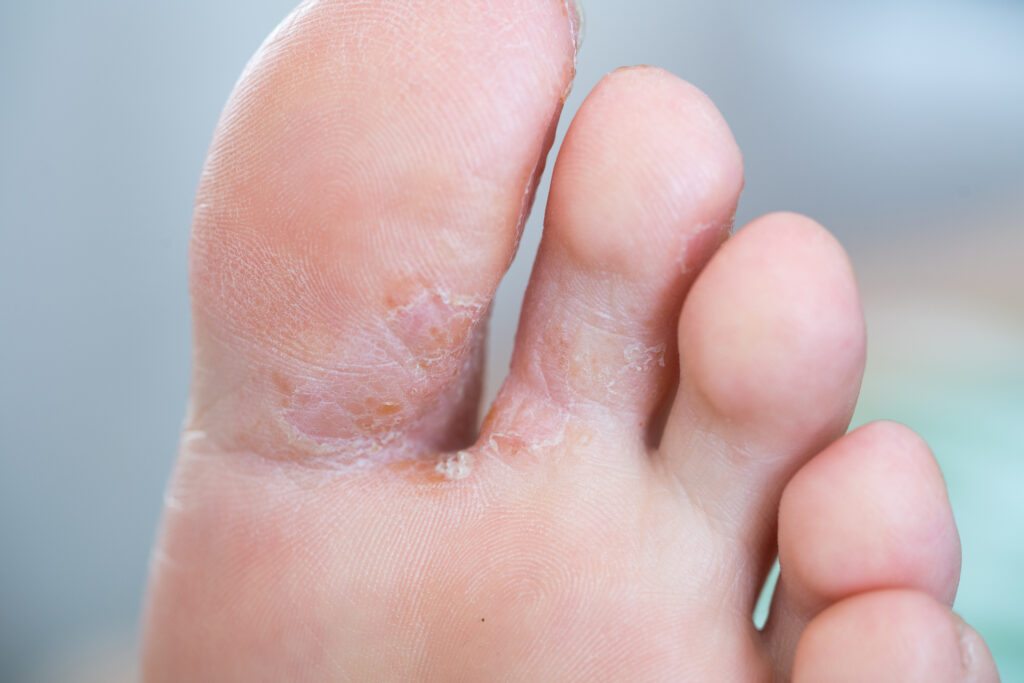
Athlete’s foot is a fungal infection that usually starts in between the toes. Athlete’s foot is common in those whose feet sweat a lot while confined within tight fitting shoes such as sneakers or boots. It is contagious and can be spread through floors, shoes, clothing and towels. Athlete’s foot can be closely related to other fungal infections such as ringworm. There are treatments for athlete’s foot, but it is common for the condition to come back.
There are a few causes that can contribute to athlete’s foot. Damp socks and shoes and warm, humid conditions favor the organisms’ growth (Mayo Clinic). It is common that those who play sports often can get athlete’s foot. This is due to the fact that they are constantly wearing tight shoes and sweating. If you share linens, clothes or shoes with someone who has this condition, you can also get athlete’s foot. You can spread athlete’s foot to other parts of the body, especially if you scratch the infected part of the foot.
Athlete’s foot can either affect both feet or just one. There are many different symptoms, but you could experience multiple symptoms at once. Some of these symptoms include cracked or peeling skin between the toes, itchiness, inflamed or red skin, a burning or stinging sensation and blisters. You can also experience dry and scaly skin on the bottom of the foot that can travel to the side of the foot.
It is important to take care of your feet, especially if you are prone to athlete’s foot. The following tips can help to prevent athlete’s foot. Wear sandals as much as you can to let your feet air out. Be sure to change your sock at least once a day and more frequently if your feet get sweaty. It is important to wash your feet regularly as well. It is best to use warm soapy water and apply a medicated foot powder afterwards. Finally, be sure to switch out your foot wear every other day, this helps to let your shoes dry out before wearing them again.
If you believe you have athlete’s foot, contact a physician today.
